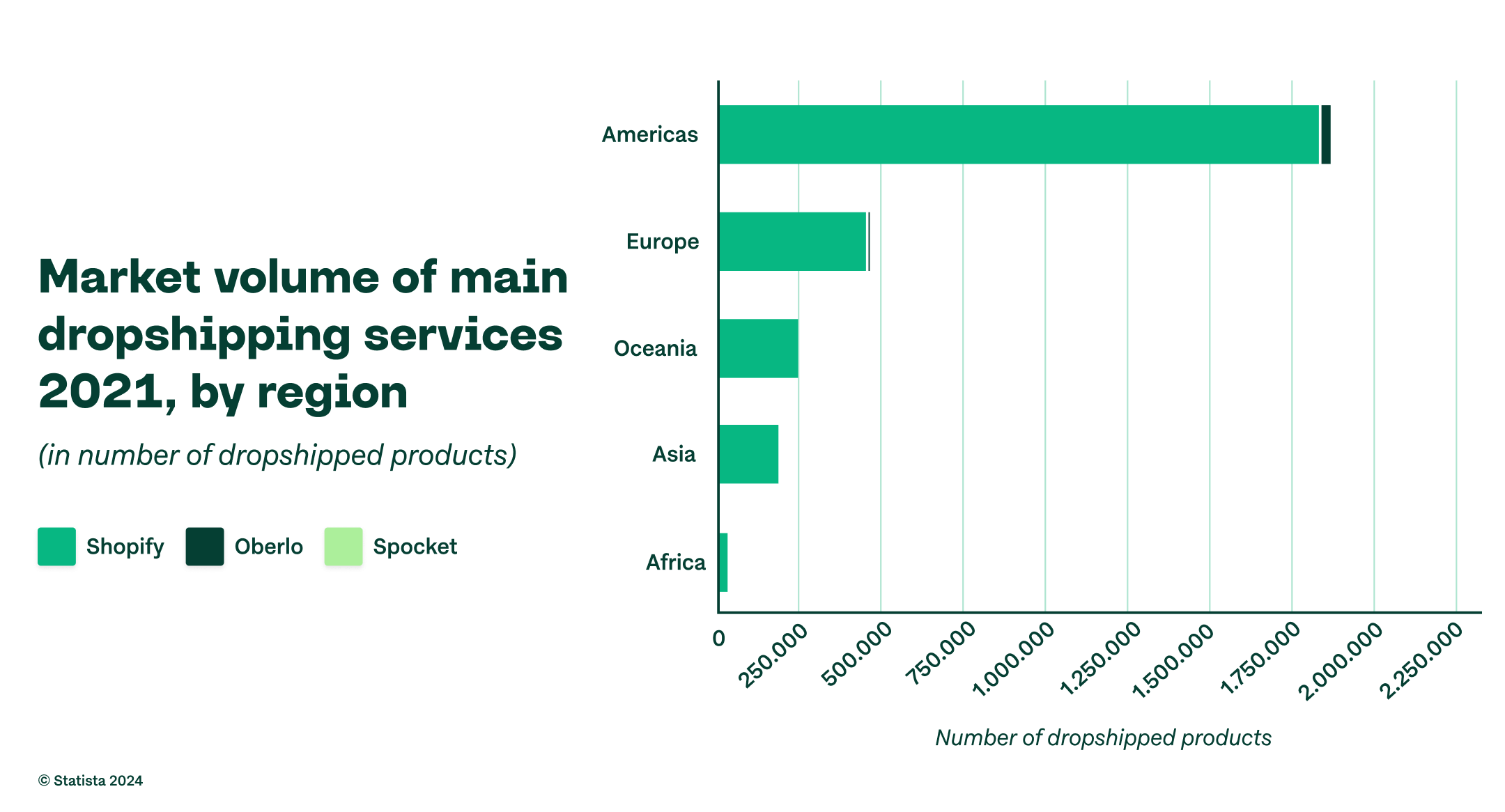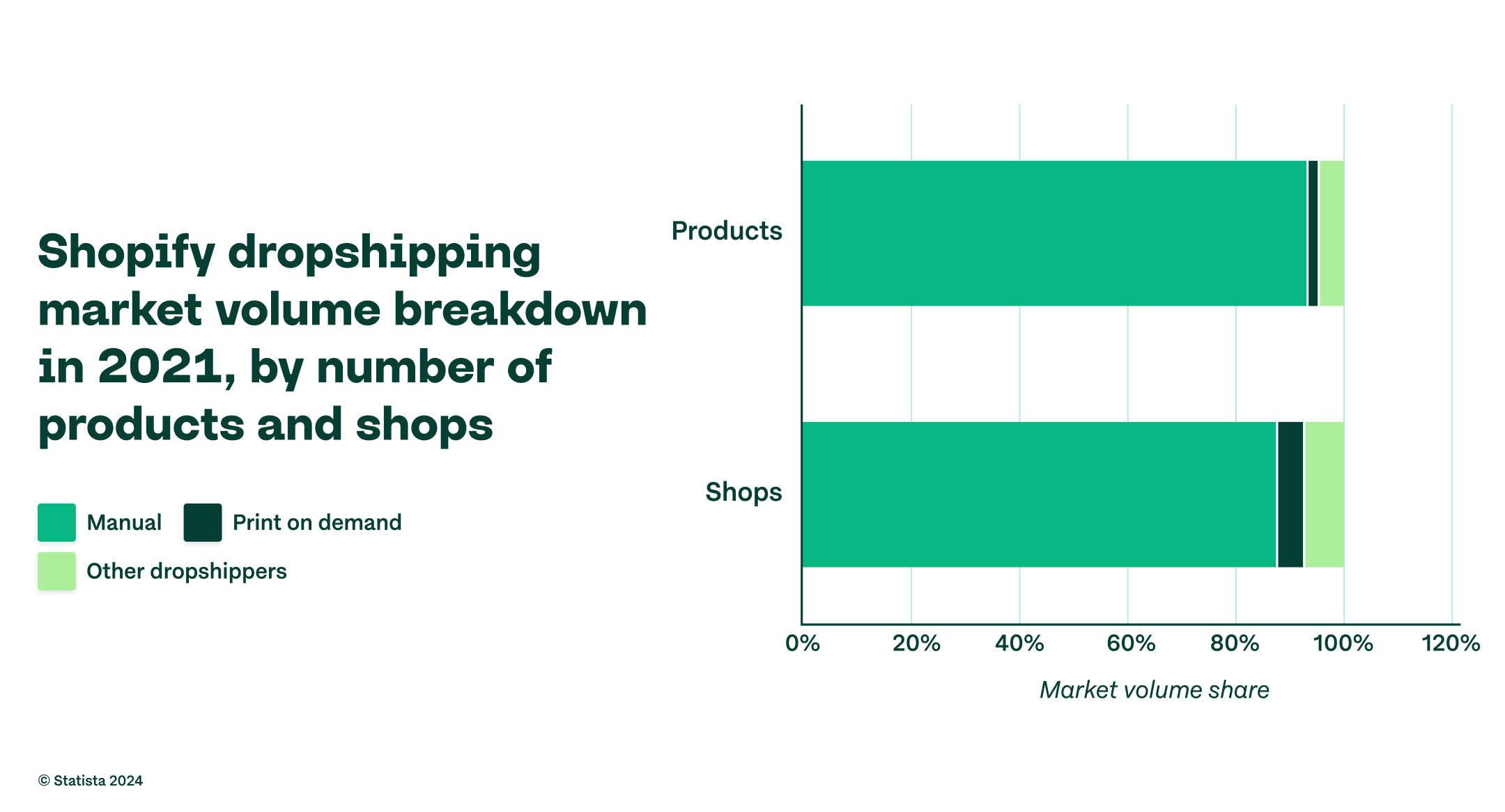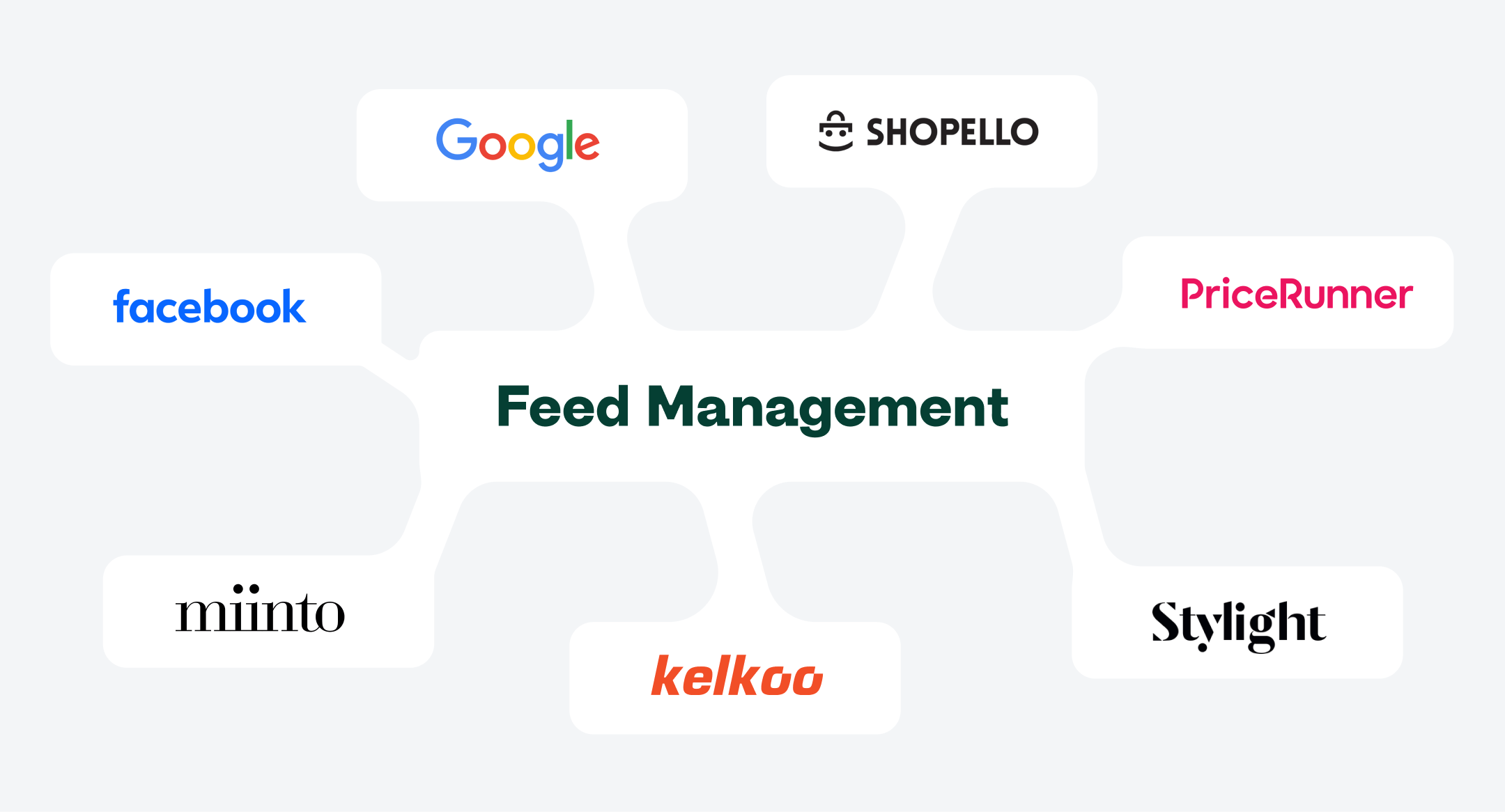Running a thriving e-commerce store without ever touching a single product while profits roll in is a proven success strategy. Welcome to the world of dropshipping, where the only inventory needed is an internet connection and a dash of entrepreneurial spirit.
This business model of turning clicks into cash allows to omit having own inventory by selling products directly from suppliers to customers. Eliminating the need for inventory greatly reduces the amount of upfront costs needed, while simplifying logistics and lowering its costs in the long run. With dropshipping, the barriers to starting own online business have never been lower.
The beauty of a dropshipping model lies in how straightforward it is while maintaning a capability to grow with ease. Store owners do not need to handle the goods themselves. Anything related to actual inventory, packaging, or shipping is handled for them. Instead, store owners can focus on marketing and helping customers. By partnering with trusted suppliers, they can sell a wide range of products and experiment with new ones all while their bank account experiences a minimal financial risk. This approach allows for expanding store catalog according to customer needs without the typical logistical headaches. Moreover, dropshipping businesses can benefit from reduced overhead costs and the ability to offer competitive pricing.
Key statistics on dropshipping business
Dropshipping market size
Dropshipping remains vibrantly growing sector within the ecommerce industry. Those who consider entering the dropshipping business may find it useful to see the statistics on this sector for making informed decisions.

The dropshipping market is growing with an astonishing rate. It had a global value of around 128.6 billion U.S. dollars in 2020. By 2026, this market will expand to about 476.1 billion U.S. dollars.
Most popular dropshipping services
A dropshipping business model requires having an online frontend where the dropshipping business owner can present its catalog. Ther are several distinct leaders that are most oftenly used for building such stores.

Data shows Shopify is the top choice platform for dropshipping. It surpassed both its nearest competitors Spocket and Oberlo in the number of products dropshipped. In the Americas alone, Shopify-based stores dropshipped close to 1.9 million products, whereas Oberlo-based stores handled fewer than 33,000 products. Clients of Spocket in Americas have dropshipped tenfold less, approximately 3800 products
Similar disproportion is observed for European dropshippers. Shopify-based stores have dropshipped over 460 000 products, while shops on Oberlo have sold less than 11 000 products. Spocket in Europe was used to deliver 192 products.
In Oceania, Asia and Africa the Shopify platform is also a tp choice for dropshipping stores, who delivered 248 000, 193 000, and 35 000 products respectively in each region. Oberlo-based shops delivered 2700, 2200, and 770 products in each region respectively. Spocket is responsible for 41 and 22 products in Oceania and Asia. It was not presented by dropshipping businesses in Africa.
Shopify dropshipping market breakdown
A global study focused on Shopify dropshipping stores highlighted that the majority of them opt for manual order fulfillment processes instead of using third-party dropshipping services. However, a fraction of online stores, approximately 7.77 percent, utilize third-party dropshipping services such as Oberlo.

Main dropshipping product categories on Shopify
According to Statista, clothing constituted nearly 16 percent of all products dropshipped via Shopify. The home and garden category amassed approximately 370 thousand dropshipped products, while jewelry and watches accounted for over 280 thousand products.

The rest of top-10 product categories for dropshipping looks like the following, sorted by the number of sold items:
- Health & beauty (194 000)
- Fashion accessories (193 000)
- Food & beverages (106 000)
- Electronics (95 000)
- Art (93 000)
- Car & truck parts (92 000)
- Sport goods (90 000)
Dropshipping business model in details
For those just entering the entrepreneurial world, dropshipping offers an uncomplicated and low-risk route to launch an online venture. By setting up a digital storefront, individuals can sell items without the need for a substantial initial investment in stock or warehousing. This approach keeps the initial expenses low. Nonetheless, dropshipping demands vigilant management to navigate challenges such as slim profit margins and ensuring dependable suppliers. Effective promotion and maintaining strong customer relations are vital for ongoing growth and stability. Consistently assessing supplier performance and keeping abreast of market trends can further enhance the business's success.
How dropshipping works
To launch a dropshipping enterprise, one must establish an online storefront through platforms such as Shopify/WooCommerce/BigCommerce. These services supply the essential resources and designs needed to create a polished retail space for showcasing products. Additionally, they offer features for handling payments/tracking stock/analyzing data to streamline business management.
Once the store's website is operational, the subsequent crucial task involves identifying trustworthy suppliers for dropshipping. While platforms like AliExpress or Alibaba are popular choices, it's vital to assess the quality of their products and the reliability of their shipping services thoroughly. After selecting reliable suppliers, incorporate their products into the catalog offering. Automation tools can streamline the process of synchronizing information between the store and the supplier.
Once products are listed on the frontend of thw website the Shopify store has launched, the store owner shifts focus to increasing website visitors. Process of attracting potential buyers involves utilization multiple strategies for getting increased conversions. The primary goal is to encourage site visitors to make purchases.
In dropshipping, when a purchase is made on the Shopify store, the owner gets paid and receives the order specifics. This information is then passed on to the supplier, who gets paid the wholesale rate for the product. Many dropshipping tools are available to automate this process within the Shopify platform.
Upon receiving the order details, the supplier takes responsibility for packing and delivering the product to the customer. While the product may or may not bear the supplier's mark, it may feature the store's branding.
While Shopify store owners, who build their business based on dropshipping, don't deal with physical warehouses to keep owned by them inventory, they still need to manage stock, however, in a virtual one. This involves monitoring supplier inventory levels to timely obtain relevant changes for accurate updating product listings in a store. Maintaining good communication with suppliers in this regard.
Guidelines for initiating a profitable dropshipping enterprise
Achieving success in dropshipping requires meticulous planning. Identifying a high-demand, low-competition niche is vital, and tools such as Google Trends/Keywords Plsnner can offer important insights into lucrative markets.
After pinpointing a niche that offers a balance between profit potential and competition, the next step is to thoroughly vet possible suppliers. The success of a dropshipping venture heavily depends on reliable suppliers who deliver quality products, maintain consistent service, and ensure prompt shipping. To verify their credibility, examine each supplier's reputation, review customer feedback, and conduct small test purchases to ensure they meet the necessary standards for a Shopify store.
Building up a Shopify store is vital for running a dropshipping business. The design should be consistent with the brand’s image. The front end should offer straightforward navigation and comprehensive product details. A user-friendly and visually pleasing layout can enhance the shopping experience and increase conversion rates.
Effective pricing is essential for any chance of predictable success in dropshipping. Establishing prices that secure a profit while covering all costs is critical. Factors like product expenses, delivery charges, and market conditions should be taken into consideration when setting prices.
A well-rounded marketing plan is vital for driving traffic, which in turn can become a surce of clientele for boosting sales. It should incorporate different channels based on data-driven content marketing. Enterpreneur should also incorporate power of social media, and paid advertising, each catering to specific audience groups.
Prioritizing customer contentment is critical for well-running business. Excellent service fosters positive feedback, which is generated simultaneously with the loyalty feeling. Both are important for building a reputable brand. Responding swiftly to clientele queries, resolving issues efficiently, and simplifying the purchasing experience are key practices for ensuring overall satisfaction of the clientele.
Advantages and disadvantages of dropshipping-based model
Despite its popularity among entrepreneurs, the dropshipping model has its share of challenges that shouldn't be overlooked.
Pros of dropshipping
- Low startup costs: An advantage of dropshipping is that it enables entrepreneurs to launch their business with limited funds because they don't need to buy inventory in bulk beforehand.
- Easy to scale: Dropshipping offers scalability because business can be expanded by introducing new products without the need to manage inventory.
- Flexibility: A real flexibility occurs to manage business from any place, offering adaptability to owner's lifestyle.
- Wide product range: Offer diverse range of goods without the requirement of purchasing inventory beforehand.
- Reduced risk: Mitigate the risk of having unsold inventory and the subsequent losses since products are aquired after securing a sale.
Cons of dropshipping
- Slim profitability prospects: Because of heightened presence of dozens of similar stores in a chosen niche and dependence on external suppliers, profit margins tend to be narrow..
- Stock management problems: Not having oversight of stock levels may result in out-of-stock items and order delays.
- Delivery challenges: Handling timing and shipping costs is tough, especially when working with suppliers from other countries.
- Supplier consistency concerns: Relying on suppliers for product standards and order completion might pose problems if the supplier does not adhere to expectations.
- Intense market rivalry: The ease of entering the field implies that numerous others might offer comparable items, emphasizing the need for setting oneself apart.
Where to search for dropshipping suppliers
Securing dependable suppliers is crucial in dropshipping for various reasons. Firstly, suppliers significantly influence the caliber and diversity of products accessible for sale. Secondly, effective and reliable suppliers guarantee prompt order processing and delivery, essential for upholding a favorable customer journey. Furthermore, partnering with the appropriate suppliers facilitates the cultivation of strong alliances that may result in improved conditions, thereby boosting competitiveness in the dropshipping arena.
The selection of suppliers plays a pivotal role in the triumph of a dropshipping enterprise. It entirely falls on the business proprietor to seek out optimal suppliers. Initially, the pursuit of suppliers can be aided by leveraging the following resources:
Supplier directories
- AliExpress: One of the largest platforms for dropshipping products. Offers a wide range of products from various suppliers.
- SaleHoo: A comprehensive directory of dropshipping suppliers, wholesalers, and manufacturers.
- Worldwide Brands: A database of certified dropshipping suppliers and wholesalers.
- Wholesale Central: A directory connecting retailers with wholesale suppliers.

Marketplaces
- Amazon: Discover trending goods and find their suppliers for dropshipping.
- eBay: Another popular platform where to find products to dropship.
- DHgate: A Chinese wholesale marketplace offering a wide range of products for dropshipping.
Dropshipping-specific platforms
- Oberlo: Integrated with Shopify, it offers a wide selection of products for dropshipping, primarily sourced from AliExpress.
- Doba: A platform connecting retailers with suppliers across various industries.
- Spocket: Focuses on quality products and fast shipping times, particularly in the US and EU.
Trade shows, events, networking
- Participate in industry exhibitions and gatherings to establish direct connections with manufacturers and wholesalers.
- Explore virtual gatherings and online events to engage in networking activities.
- Participate in digital forums, groups, and online communities centered around dropshipping to share knowledge and discover trusted suppliers.
- Initiate direct contact with manufacturers and wholesalers within your specific industry to inquire about potential dropshipping collaborations.
How to promote dropshipping Shopify store with product feeds

The prosperity of a Shopify dropshipping venture hinges greatly on its marketing endeavors. Expanding the reach and visibility of a dropshipping Shopify store can be achieved by promoting it through online marketplaces and social media platforms.
A Shopify can ensure it's catalog is automatically transmitted to any marketplace by using a product feed. Creating a product feed is the next step in the store marketing. A product feed is a file that contains essential information about goods' attributes. Easily obtain such file for any sales channel with the Mulwi app available in the Shopify app store.
After connecting a Shopify store to the marketplace through the feed, the Mulwi app ensures the feed is always up to date, and only the fresh catalog data is synced with the sales channel
Summarizing
Operating an online store through dropshipping may be a dream-like solution for some enterpreneurs. Running an internet shop with this business model not just streamlines inventory control but also mitigates the risk of excess stock or unsold merchandise.
Furthermore, as items come straight from suppliers to consumers, businesses can diversify their product selection without fretting about storing them. This system also enables business owners to experiment with fresh product concepts and adapt their offerings to meet market demand rapidly.
Additionally, through utilizing analytics tools furnished by online trading platforms, shop proprietors can acquire insights into consumer behavior and preferences, thereby enhancing their promotional endeavors. Overall, dropshipping offers a flexible and expandable strategy for online commerce, allowing entrepreneurs to concentrate on business expansion without the encumbrance of inventory management.




